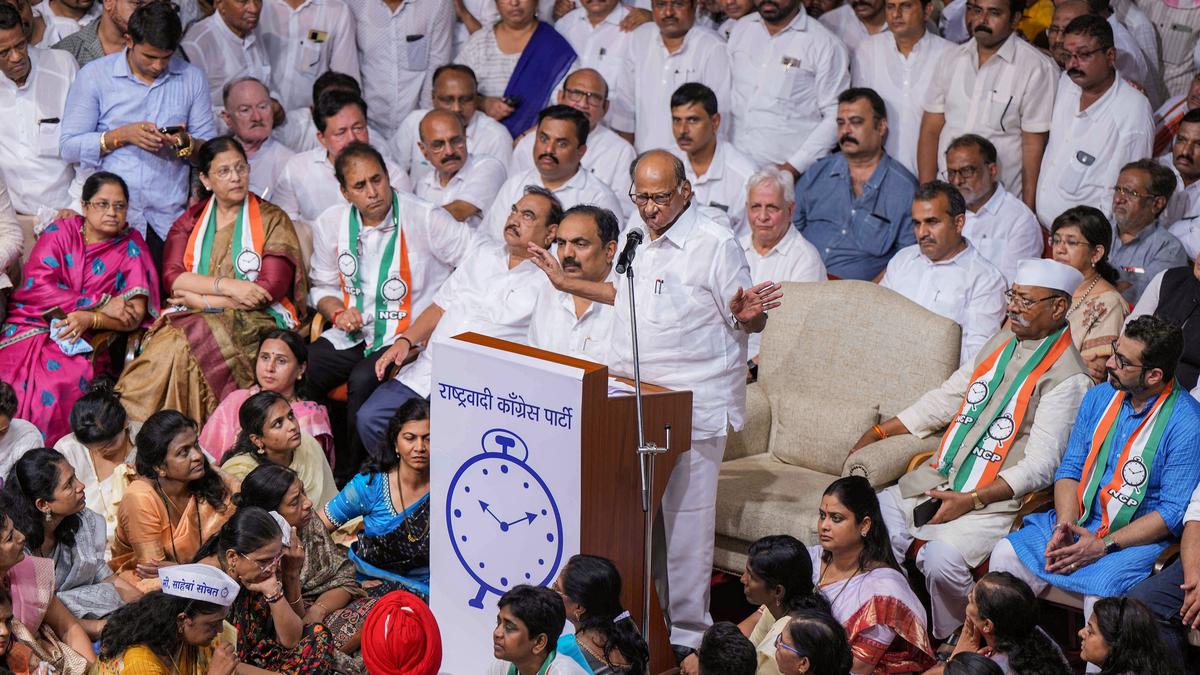
Deciphering Maharashtra’s defections, its politics Premium
The Hindu
The national context is important because the politics of Maharashtra, like the politics of Assam, deeply intersects with the slow-moving terrain of national politics
The issue of political defections typically takes centre-stage at a particular moment in the life of a polity. This is the intervening period of transition when an old system of political dominance gives way to a new one.
In Maharashtra, the era of Congress dominance, which had weakened by the 1990s, sputtered to an end in 2014. Yet, the Bharatiya Janata Party (BJP) has not been quite able to take over the reins from the Congress-Nationalist Congress Party (NCP) combine, given the attitude of the local elites in regions such as western Maharashtra, leading to a chaotic decade of attrition. Whether the dramatic switch of the Ajit Pawar NCP faction to the National Democratic Alliance (NDA) signals the birth pangs of a new era of the BJP’s dominance, or is merely a contingent truce, remains to be seen.
The BJP’s singular majority at the national level since 2014 has whetted its desire for State-level dominance in a number of States. The success of these various State campaigns has been predicated to a large extent on an array of mass defections from erstwhile ruling and/or primary Opposition parties. The volatile politics of the northeastern States, dependent on central aid, fell to this trend the earliest.
The BJP became the ruling party in Assam in 2016 following key defections from the Asom Gana Parishad and the ruling Congress. This was the model of rapid party expansion, built on defections of leaders particularly from dominant caste/classes, which was later used in Tripura and the wider northeast. In Arunachal Pradesh, in 2016, almost the entire State unit of the Congress — 44 out of 45 MLAs, including the Chief Minister, Pema Khandu — defected overnight to an NDA ally, and shortly thereafter to the BJP.
Thus, the split of the NCP in Maharashtra now is better understood in the context of national politics. Such a move enables us to move beyond the immediate plane of contingent factors such as leadership successions and the coercive meddling of central agencies. It will also help explain the split of the NCP and the Shiv Sena (within a dizzying year) in terms of the evolving structural dynamics of Maharashtra politics.
The national context is particularly important because the politics of Maharashtra, like the politics of Assam, deeply intersects with the slow-moving terrain of national politics. This has provided the State with its characteristic political stability, underwritten by the hegemony of the dominant farming caste of the Maratha-Kunbis, and bolstered with the support of a largely sympathetic Centre. Political scientist Suhas Palshikar has suggested that the traditional “Congress system”, the model of informal accommodation of diverse constituencies within the party, has survived perhaps the longest in Maharashtra.
Until 2014, the Congress party (or a breakaway Congress faction) ruled the State for almost the entire post-Independence period. The State remained largely unaffected by the ideological challenge of the Mandal revolution which reshaped the political structure of northern India. The only significant exception was the three-year period between 1995-1998 when the NDA alliance (the Shiv Sena and the BJP) took control of the State. This short-lived, abortive transition in State politics also coincided, unsurprisingly, with a hazy period of national transition marked by the NDA coalition’s ascent to power at the national level.











